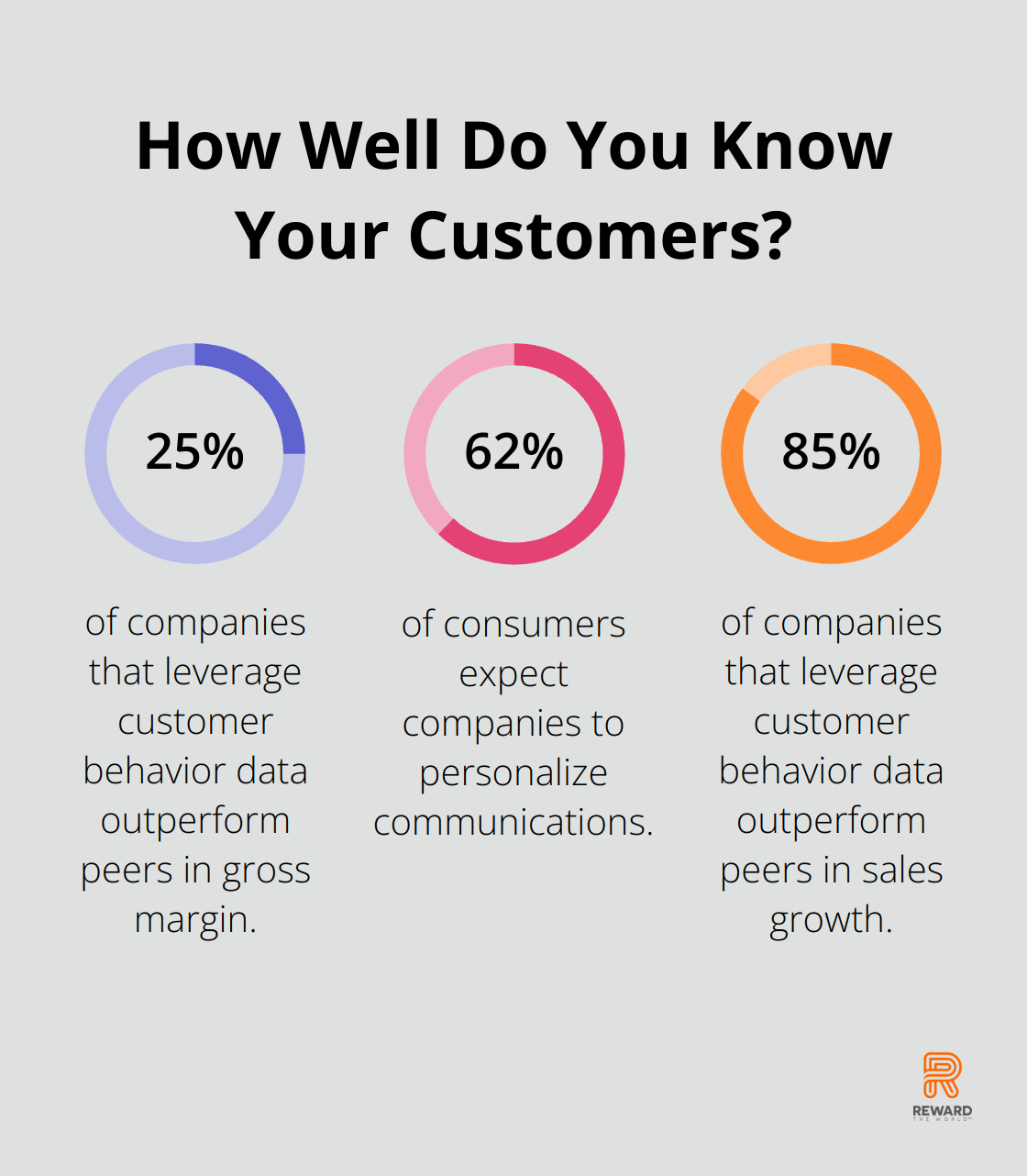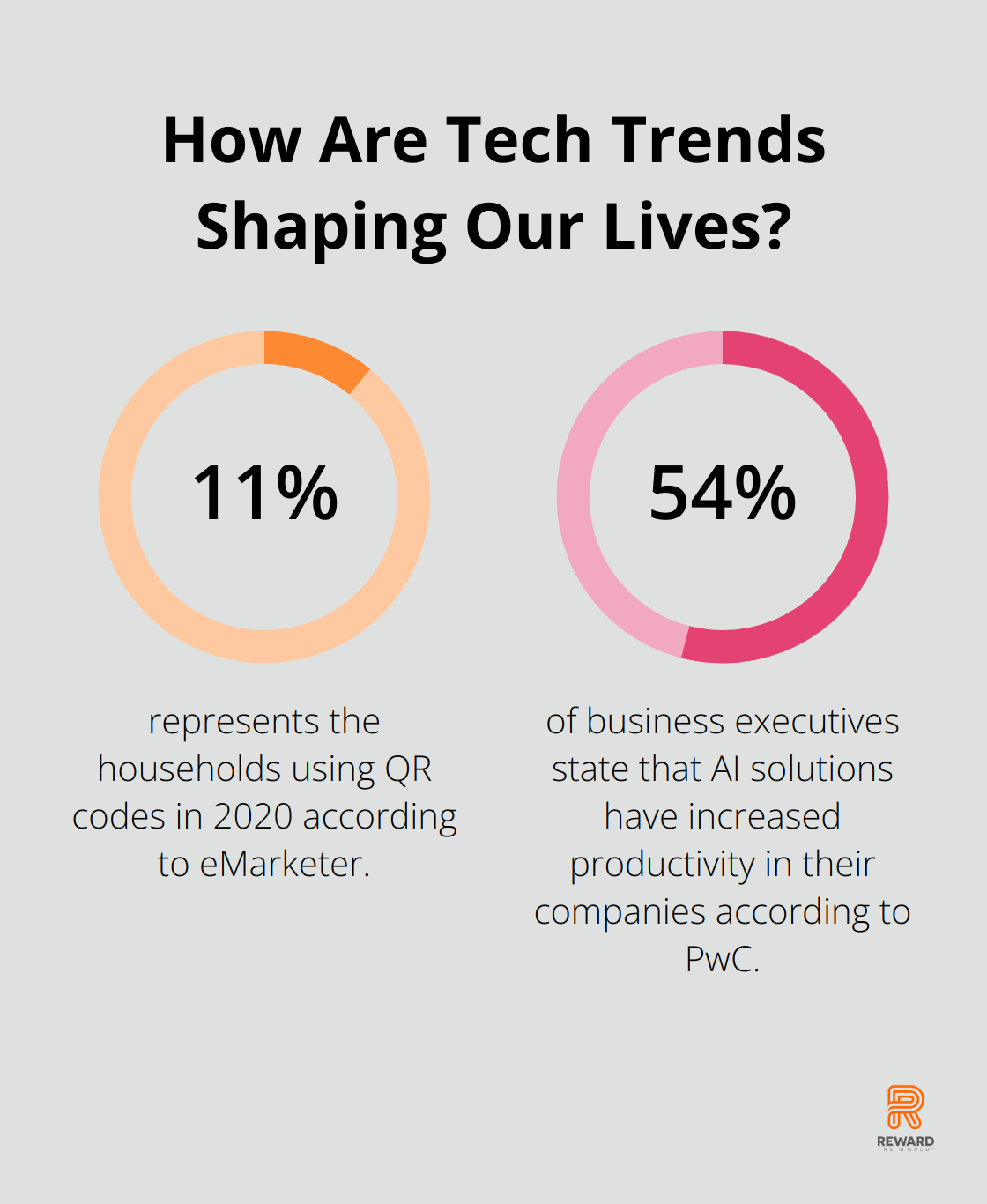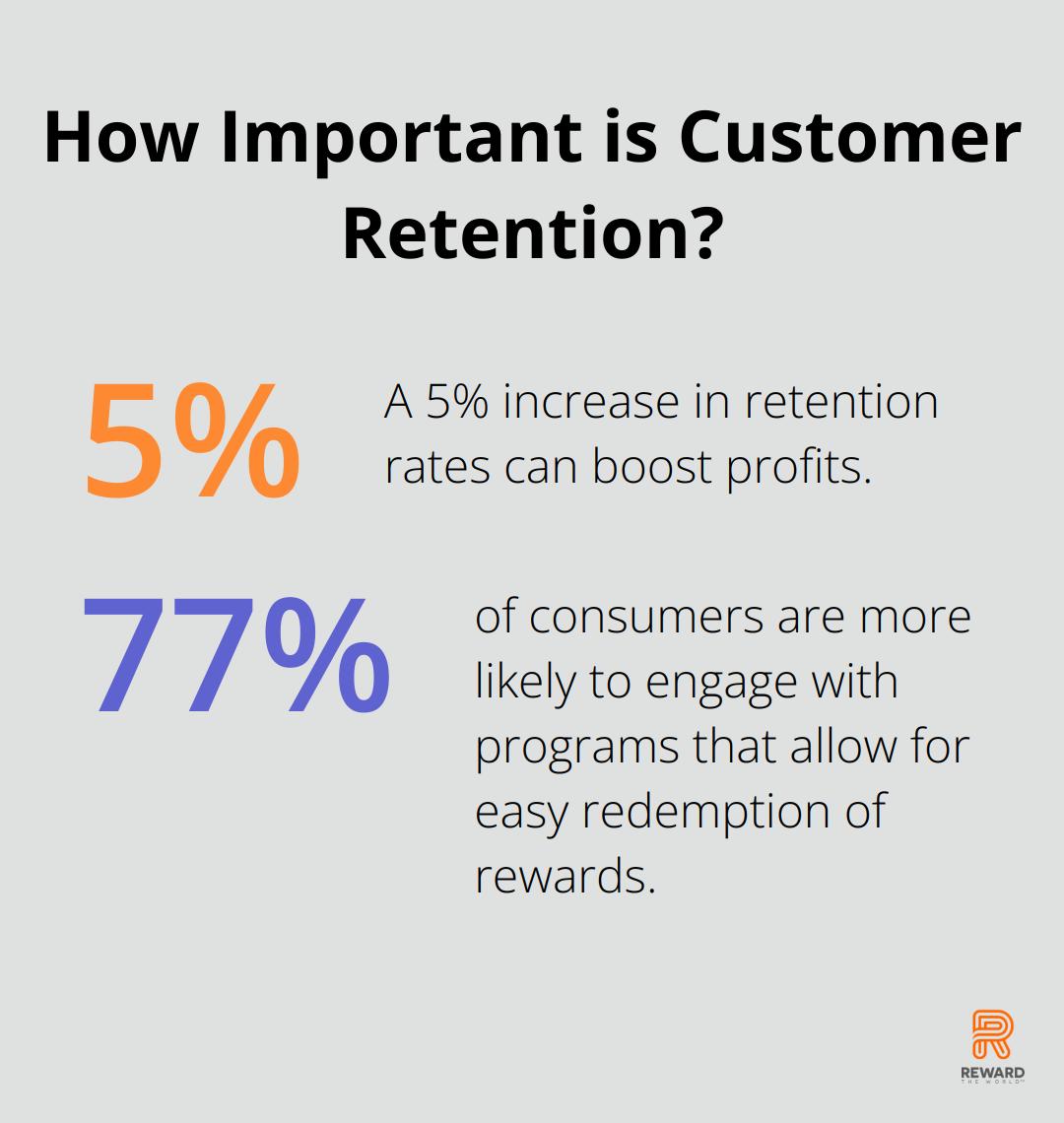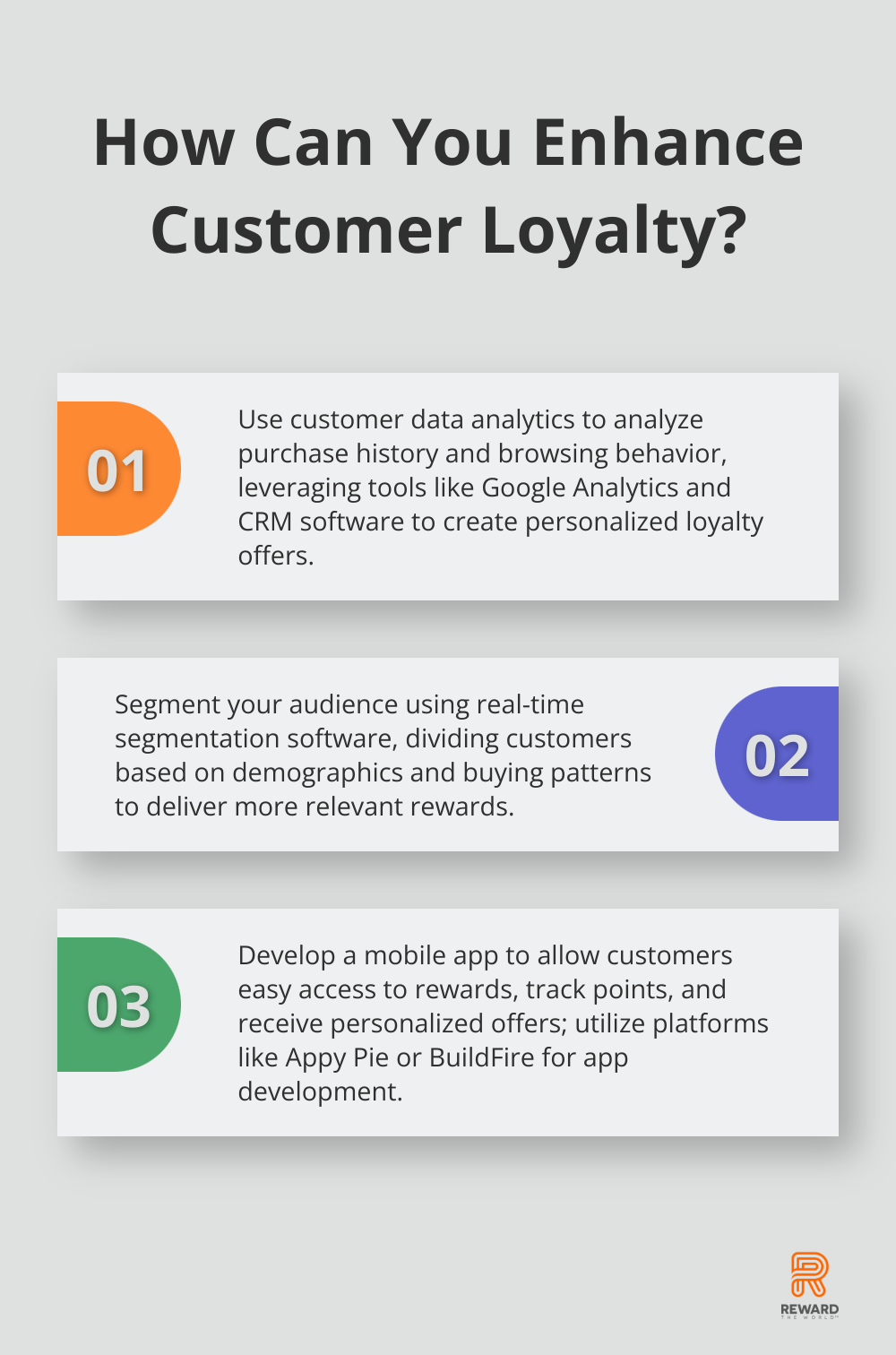
Enhancing your loyalty scheme can significantly boost customer satisfaction and retention.
By tailoring offers to customer preferences and integrating the latest technology, businesses can create more engaging and effective loyalty programs.
Here at Reward the World, we are committed to sharing practical tips and proven strategies to help you make the most of your loyalty initiatives.
How to Tailor Offers to Customers
Tailoring loyalty program offers to customer preferences can transform a mediocre program into a high-performing one. Here’s how to make it happen effectively.
Use Customer Data Analytics
Customer data analytics are the foundation of personalized loyalty programs. By analyzing purchase history, browsing behavior, and engagement metrics, you can identify patterns and preferences. For example, Amazon’s recommendation engine is well-known for driving sales by suggesting products based on past purchases and searches.

Using tools like Google Analytics and CRM software can enhance your data insight capabilities. According to McKinsey, companies that leverage customer behavior data outperform peers by 85% in sales growth and more than 25% in gross margin. Integrate these insights into your loyalty scheme to offer rewards and deals that resonate with individual customers.
Segment Your Audience
Segmentation allows you to deliver more relevant rewards. Rather than a one-size-fits-all approach, divide your customer base into segments based on demographics, buying patterns, and engagement levels. This strategy was successfully implemented by Starbucks, which uses tiered loyalty levels to reward different types of customers with varying perks.
To make segmentation effective, utilize software solutions that can segment customers in real-time. KPMG found that 67% of customers expect brands to offer personalized rewards based on their purchase history. Incorporating this level of segmentation can significantly elevate customer satisfaction and engagement.
Personalize Rewards and Communications
Personalization goes beyond just addressing customers by their first name. Tailor your rewards and communications to individual preferences. For instance, Sephora personalizes its loyalty emails by recommending products based on a customer’s previous purchases and interactions.
AI and machine learning can enhance personalization efforts. Technologies like AI can analyze vast amounts of data to make personalized recommendations. According to a study by Salesforce, 62% of consumers expect companies to personalize communications. Using machine learning algorithms can automate this process, making your loyalty scheme more efficient and impactful.
For more detailed strategies on enhancing customer loyalty through personalization, check out these reward program personalization techniques.
This sort of detailed personalization can turn casual shoppers into loyal advocates, significantly increasing lifetime value and retention rates.
Integrate Technology into Loyalty Programs
Integrating the latest technological advancements into your loyalty schemes can significantly boost engagement and satisfaction. Some of the most impactful strategies include leveraging mobile apps, implementing QR codes and NFC technology, and using AI for predictive analysis. Here’s how each approach can elevate your loyalty program.
Leverage Mobile Apps
Mobile apps are an essential tool for modern loyalty programs. According to Statista, over 3.8 billion people globally own smartphones, making mobile apps a highly accessible platform for customer engagement. A dedicated loyalty app allows customers to easily access their rewards, track their points, and receive personalized offers.

Businesses like McDonald’s have utilized mobile apps to streamline their loyalty programs. Their app allows users to customize orders, earn points, and redeem rewards all in one place. This not only enhances the user experience but also provides the company with invaluable data on customer preferences.
To get started, consider developing a mobile app that integrates with your current loyalty program. Platforms like Appy Pie and BuildFire offer user-friendly tools to create these apps without needing extensive coding skills.
Implement QR Codes and NFC Technology
QR codes and NFC (Near Field Communication) technology offer seamless and instant ways for customers to engage with your loyalty program. By scanning a QR code or tapping an NFC-enabled device, customers can quickly access rewards, promotions, and loyalty points.
Retail giant Walmart has integrated QR codes into its app, allowing customers to scan and pay through their mobile devices. This not only speeds up the checkout process but also ties the transaction directly into the loyalty program. According to eMarketer, 11 million households used QR codes in 2020, and this number is expected to grow.
For businesses looking to implement this technology, consider using platforms like Scanova for QR codes or NXP for NFC technology. These solutions are relatively cost-effective and can significantly improve customer interaction with your loyalty program.
Use AI for Predictive Analysis
Artificial Intelligence (AI) allows businesses to use predictive analysis to personalize customer experiences better. By analyzing customer data, AI can forecast future behaviors and tailor loyalty rewards accordingly. According to a report by PwC, 54% of business executives state that AI solutions implemented in their companies have increased productivity.
A prime example is Netflix, which uses AI algorithms to recommend shows and movies based on a user’s viewing history, significantly enhancing user engagement. In the realm of loyalty programs, AI can identify which rewards and promotions are likely to resonate with each customer segment, thereby improving redemption rates.
For companies looking to incorporate AI into their loyalty programs, platforms like Salesforce and IBM Watson offer robust tools for predictive analysis. By leveraging these technologies, businesses can offer highly personalized and timely rewards, ensuring a more engaging customer experience.
For more data-driven strategies in loyalty programs, consider exploring this guide on in-depth analytics.
Measuring Loyalty Program Success
Tracking the success of a loyalty program isn’t a guessing game. By focusing on the right performance metrics, gathering actionable feedback, and making data-driven adjustments, businesses can continuously improve their loyalty programs.
Focus on Key Metrics
The first step in measuring success is to track performance metrics rigorously. Key metrics include customer retention rates, redemption rates, and customer lifetime value (CLV). According to Bain & Company, a 5% increase in retention rates can boost profits by 25% to 95%. Monitoring these metrics provides a clear picture of your program’s impact.

Another crucial metric is the Net Promoter Score (NPS), which gauges customer satisfaction and loyalty. High NPS scores often correlate with increased customer loyalty and word-of-mouth referrals. Additionally, monitor the program’s engagement levels, such as the frequency of points redemption and active participation rates.
Gather and Analyze Customer Feedback
Customer feedback is a goldmine for insights. Utilize surveys, focus groups, and social media to gather honest opinions about your loyalty program. Tools like SurveyMonkey make it easy to create and distribute surveys. Feedback should cover various aspects, such as ease of use, value of rewards, and overall satisfaction.
Analyzing feedback helps identify pain points and areas for improvement. According to Forrester, companies that listen to and act on customer feedback enjoy higher customer satisfaction and loyalty. Regularly updating your program based on this feedback can foster a more engaged and loyal customer base.
Make Data-Driven Adjustments
A static loyalty program will eventually lose its appeal. Continuously adjust your strategies based on metrics and feedback. For instance, if redemption rates are low, consider simplifying the process or offering more attractive rewards. An Accenture study reveals that 77% of consumers are more likely to engage with programs that allow for easy redemption of rewards.
Use data analytics tools like Tableau or Google Data Studio to visualize your metrics and identify trends. These tools can help you make informed decisions on where to allocate resources and how to tweak your program for better performance. For detailed strategies on optimizing loyalty programs, refer to these best practices.
In summary, tracking metrics, gathering feedback, and making continuous adjustments are essential to maintaining a successful loyalty program. Implement these strategies to ensure your program not only meets but exceeds customer expectations.
Conclusion
Enhancing your loyalty scheme involves tailoring offers through data analytics, segmenting your audience, and personalizing rewards. Integrating technology like mobile apps, QR codes, NFC, and AI adds an extra layer of engagement and efficiency.

Continued innovation is paramount. As trends and customer preferences evolve, so should your loyalty program. Regular evaluations will help you stay ahead. Tracking key metrics and gathering customer feedback allows for informed adjustments, keeping your program effective and engaging.
We at Reward the World provide a dynamic platform that can elevate your loyalty initiatives. Our solution is designed to foster customer loyalty, boost sales conversions, and enhance employee recognition. With robust analytics and comprehensive compliance features, our service integrates seamlessly into your existing strategies. Explore more about customer loyalty trends and optimizing mobile loyalty programs with us.
